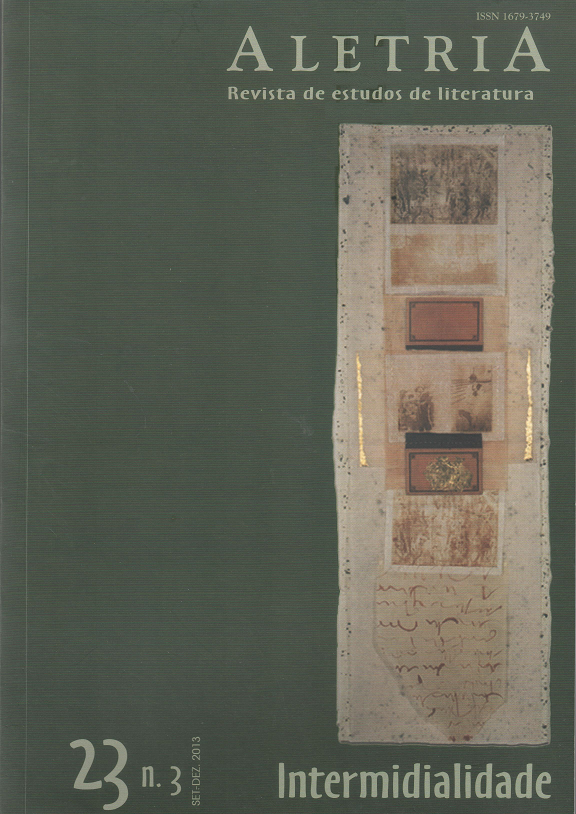Nazi Cinema, Faction and the Contemporary
DOI:
https://doi.org/10.17851/2317-2096.23.3.199-209Keywords:
Nazi Cinema, faction, contemporaneityAbstract
Part of the success of the Nazi Program during World War II was due, undoubtedly, to the use of cinema, whether as Propaganda, either as an artistic expression of a desire, perhaps repressed and veiled in search of aesthetic beauty. One would think, also, that contemporaneity is far away from some of the principles Nazi, like Eugenics programs or as seeking an Aryan master race. But nevertheless, we still find some artistic presence of Nazi Germany in various parts of our society. This article compares the movies produced in the Nazi period with the different artistic manifestations of contemporaneity.
Downloads
References
AGAMBEN, Giorgio. O que é contemporâneo e outros ensaios. Tradução: Vinícius Nicastro Honesko. Chapecó: Argos, 2009.
ADORNO, Theodor W. Adorno, Freudian Theory and the Pattern of Fascist Propaganda. In: ARATO; Andrew; GEBHARDT, Eike (ed.). The Essential Frankfurt School Reader. New York: [s.n.], 1978.
BEEVOR, Antony. La fiction et les facts: Perils de la “ faction ”. Le Débat, Paris, n. 165, p. 26-40, 2011/2013.
BENJAMIN, Walter. A obra de arte na era de sua reprodutibilidade técnica. 1955. Disponível em: http://www.deboraludwig.com.br/arquivos/benjamin_reprodutibilidade_tecnica.pdf. Acesso em: 12 dez. 2012.
DEBORD, Guy. Society of the spectacle. 1967. Texto disponível em: http://www.marxists.org/reference/archive/debord/society.htm. Acesso em: 12 dez. 2012.
FRIEDLÄNDER, Saul. Reflections of Nazism: An Essay on Kitsch and Death. New York: Indiana University Press, 1984.
FUX, Jacques. Ficção e Shoah: é possível. Revista NIEJ, Rio de Janeiro, n. 4, v. 6, p. 46-51, 2012.
FUX, Jacques. Le postmoderne et la question du plagiat littéraire. Revista de Letras da Unesp, São Paulo, v. 51, n. 2, 2011.
KRACAUER, Siegfried. From Caligari to Hitler. A psychological history of the German film. New Jersey: Princeton University Press, 2004.
LEISER, Erwin. Nazi Cinema. Translated by Gertrud Mander and David Wilson. New York: Macmillan Publishing, 1975.
MONDZAIN, Marie-José. Can images kill? Critical Inquiry, [S.l.], v. 36, n. 1, p. 20-51, Autumn 2009.
NAZARIO, Luiz. O discurso ideológico em Olympia. Aletria, Belo Horizonte, v. 22, n. 2, p. 129-142, 2012.
NAZARIO, Luiz. Revisionismo Bastardo em Tecnicolor. Disponível em: http://escritorluiznazario.wordpress.com/2009/04/18/revisionismo-bastardo-em-glorioso-tecnicolor/. Acesso em: 11 jul. 2013.
RENTSCHLER, Eric. The Führer’s Fake: Presence of an Afterlife. July, 2012. Capítulo de livro ainda não publicado. p. 33-53.
RENTSCHLER, Eric. Culture and Belief 54. Nazi Cinema: The art and politics of illusion. Fall 2012b. Notas de aula.
SONTAG, Susan. Fascinating Fascism. In: New York Review of books, 1975. Disponível: http://www.history.ucsb.edu/faculty/marcuse/classes/33d/33dTexts/SontagFascinFascism75.htm. Acesso em: 12 dez. 2012.
SPIELVOGEL, Jackson. Hitler and Nazi Germany. New Jersey: Prentice Hall, 1988.
VOLLMANN, William. T. Seeing eye to eye. Resenha de “Images in spite of all” de Didi-Huberman. Disponível em: http://www.bookforum.com/inprint/015_05/3246. Acesso em: 12 dez. 2012.
Downloads
Published
How to Cite
Issue
Section
License
Copyright (c) 2013 Jacques Fux (Autor)

This work is licensed under a Creative Commons Attribution 4.0 International License.
Authors who publish with this journal agree to the following terms:Authors retain copyright and grant the journal right of first publication with the work simultaneously licensed under a Creative Commons Attribution Non-Commercial No Derivatives License that allows others to share the work with an acknowledgement of the work's authorship and initial publication in this journal.Authors are able to enter into separate, additional contractual arrangements for the non-exclusive distribution of the journal's published version of the work (e.g., post it to an institutional repository or publish it in a book), with an acknowledgement of its initial publication in this journal.Authors are permitted and encouraged to post their work online (e.g., in institutional repositories or on their website) prior to and during the submission process, as it can lead to productive exchanges, as well as earlier and greater citation of published work (See The Effect of Open Access).





